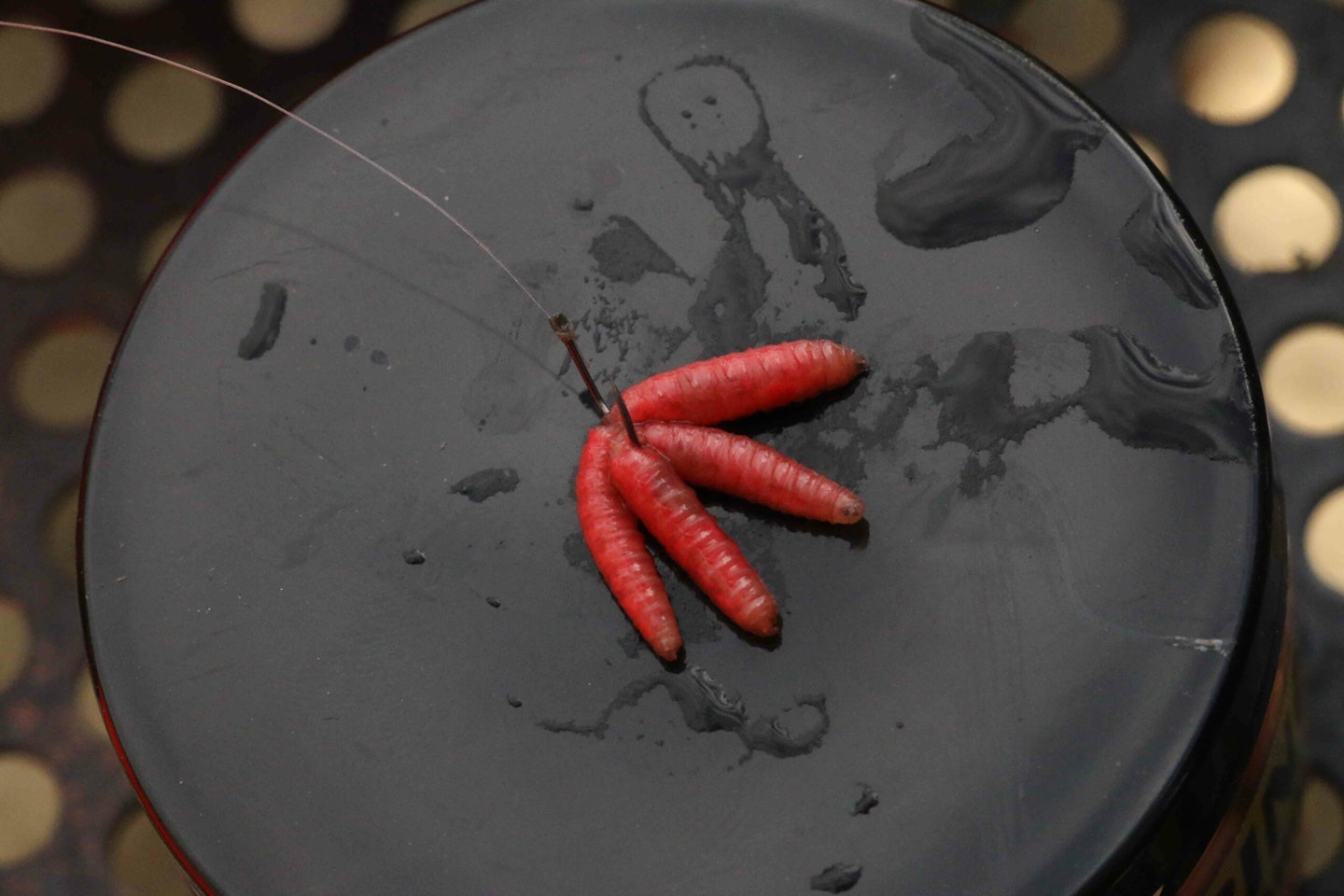I’ve heard people say that these feeders don’t work forbream on natural waters, but that’s total nonsense as, at times, they can be deadly!
During a match at Ferry Meadows in May I caught four early bream on a traditional set-up and then had an hour without a bite. Convinced there wasn’t a fish in my peg, I was amazed to catch three bream in three casts on the Hybrid! A switch back to the cage produced nothing, so I spent the rest of the match on the Hybrid to end up with 12 bream. Had I fished a conventional paternoster, I honestly believe I’d have finished with half of that.
SEE WHAT TACKLE THE WORLDS BEST FEEDER ANGLERS USE TO HELP IMPROVE YOUR FEEDER FISHING.
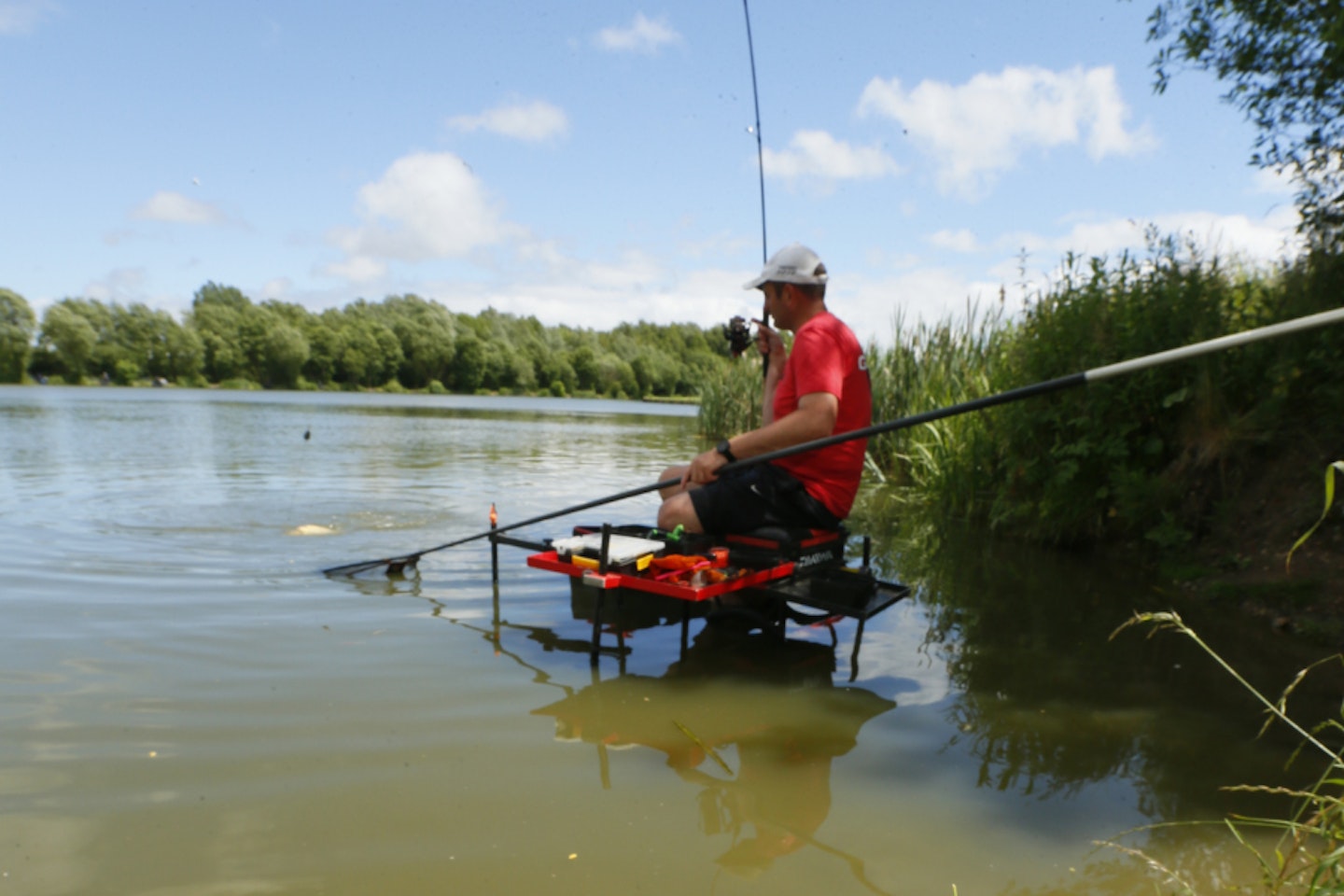
Perfect Scenario
A lot of venues are weedy right now and a Hybrid comes into its own in such conditions. With the hookbait buried in the feed on the frame, it’s always ‘fishing’ effectively, whereas with a paternoster with a longer hooklength, your hookbait could become tangled in debris instantly.
Playing fish is also easier in weedy swims as everything is inline. I remember a match a few years ago, again at Ferry, and I drew a weedy peg on Overton and lost my first two bream on a paternoster and window feeder combo when the feeder got stuck in the weed. I switched to a hybrid and went on to win the match, not losing another fish all day.
IF YOU WANT TO GIVE FEEDER FISHING A TRY, SEE OUR GUIDE TO THE BEST FEEDER FISHING VENUES.
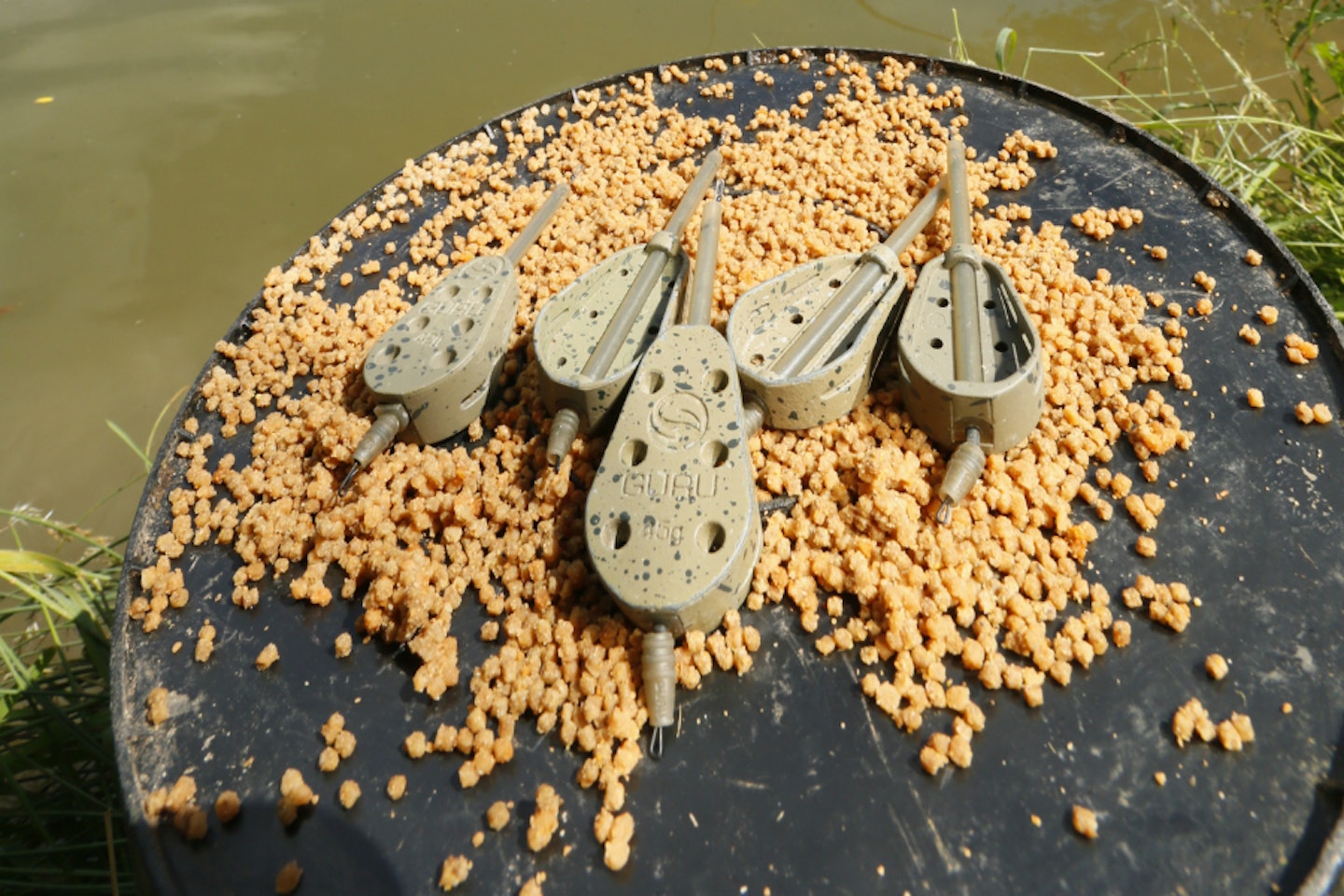
Thinking Big
If you are fishing a big expanse of water, then a large feeder has to come in to play to make it easier for the fish to locate the food. But, the weight of the feeder is just as important, and I will use either 28g or 45g. The distance and depth of water dictates which I go with. If I am chucking 30m to 50m in shallow water of 6ft or less, I’ll opt for the 28g. But for going 40m-80m in deep water, it’s always the 45g.
NEED A NEW ROD? FIND THE BEST FEEDER FISHING RODS TO USE IN OUR BUYER'S GUIDE.

Break the Rules
Method feeder fishing is always associated with 3in/4in hooklengths but I like to go slightly longer when fishing for bream. I use five inches of 0.16mm Guru Supernatural mono. It’s very abrasion
resistant, making it perfect for big natural venues where rocks or even zebra mussels can be a problem. I’m convinced that a slightly longer hooklink leads to more bites, almost as if the bream need that extra inch to hang themselves properly! When it comes to hooks, I find that a size 12 or 14 is ideal for the job.
METHOD FEEDER FISHING CAN BE DEMANDING ON YOUR REELS, OUR BUYER'S GUIDE CONTAINS THE BEST ONES TO USE.
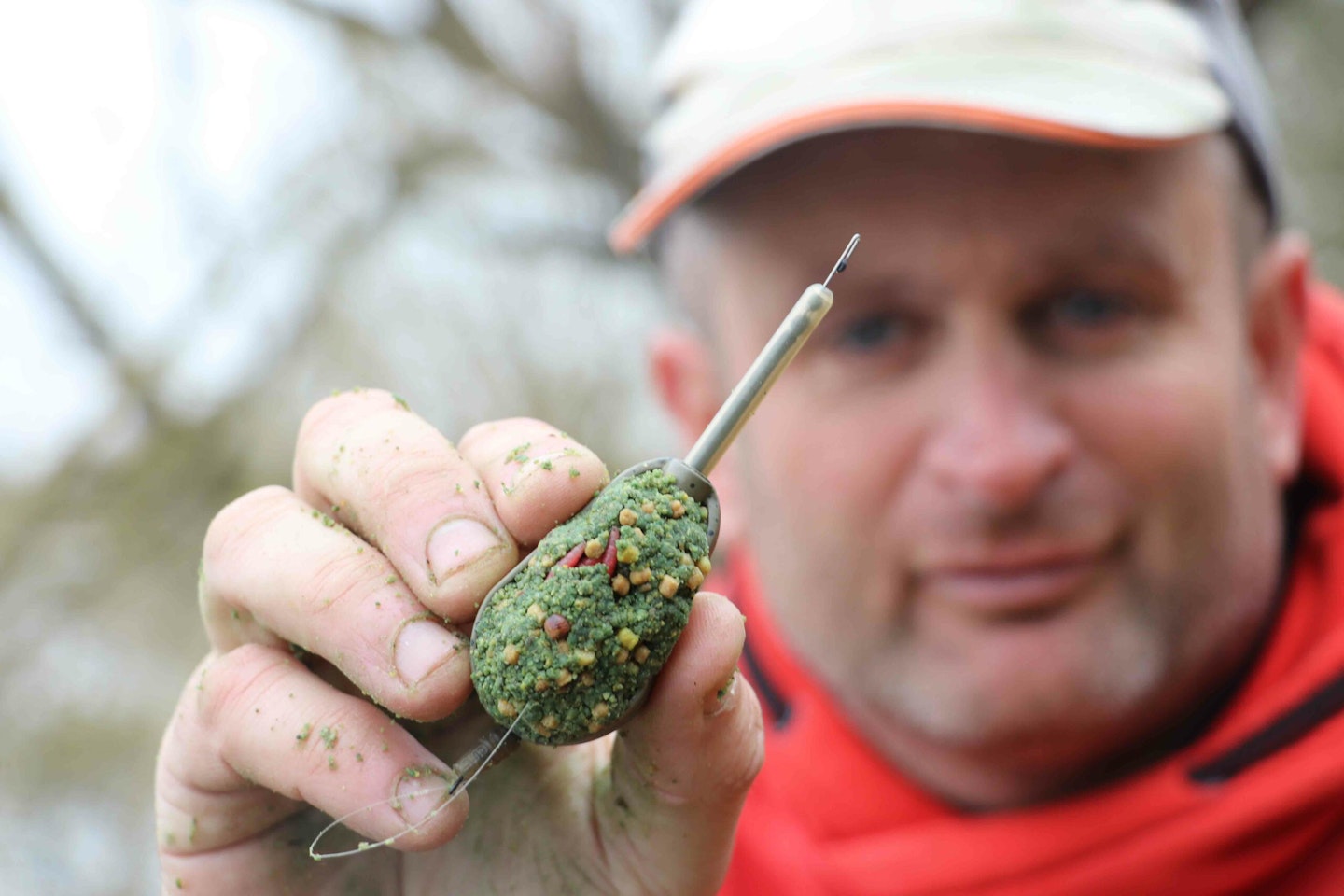
Picking the Mix
I always start with mainly groundbait on the feeder when fishing for bream and an even blend of Ringers Dark and Original is my favourite. I like to add some micro pellets to the mix too, making it a 75/25 ratio in favour of the groundbait.
I believe the pellets give the groundbait a flavour boost, and they also help to break the mix down too once your feeder is on the bottom. A fishmeal-based groundbait mix will score at a lot of venues, but if your local isn’t regularly fished or doesn’t see many pellets, then the fish won’t be tuned into it. A mix with no or little fishmeal can work better on these venues.
STAY COMFORTABLE ON THE BANK BY USING ONE OF THE BEST FISHING SEATBOXES.
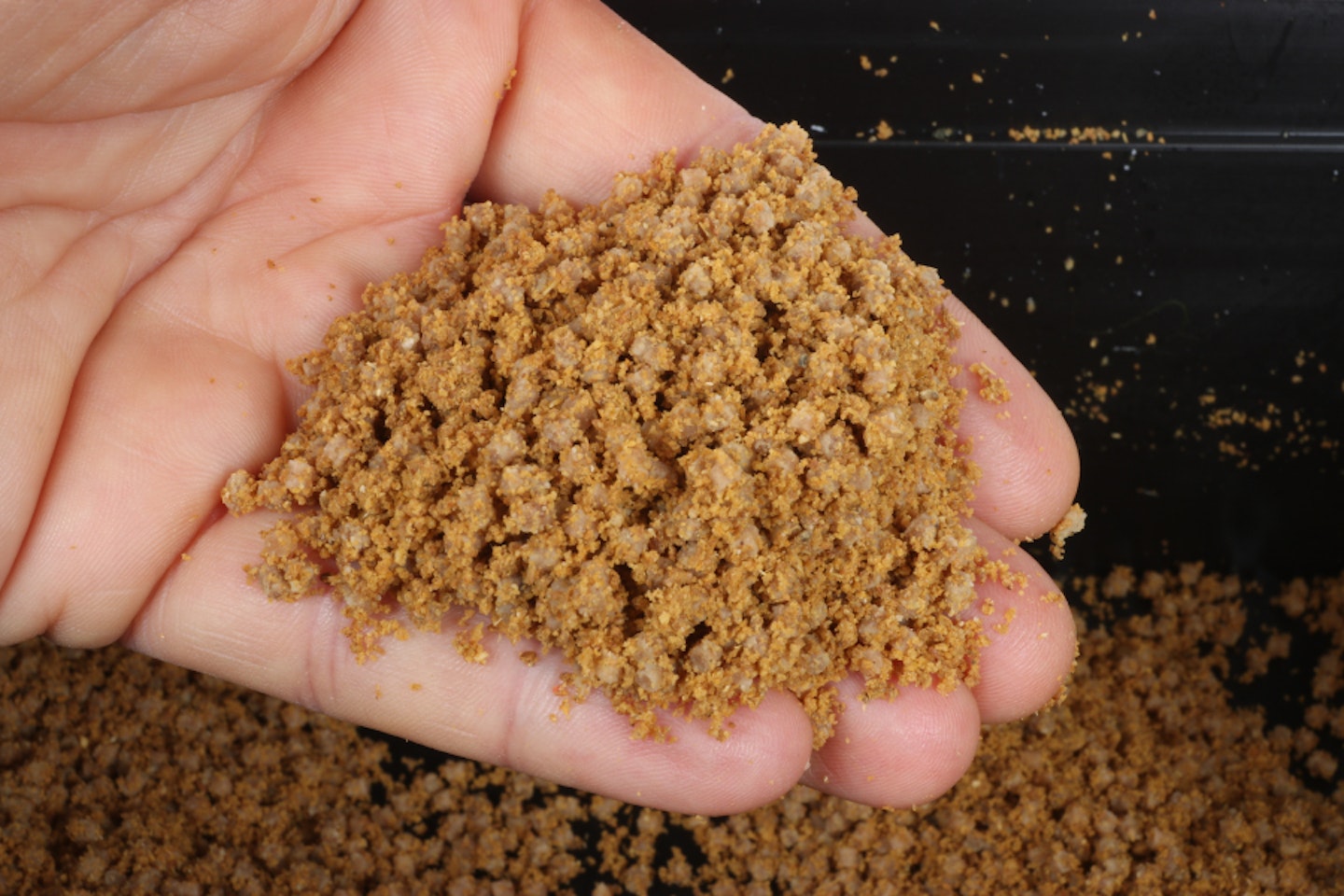
Hookbait Choices
Dead red maggots and wafters are the only hookbaits that come into the equation for me. I tend to fish two or three maggots on the hook, although I have also used a single on occasions and had some brilliant results. This was inspired by what I found while filming the Guru Underwater series at Ferry. If you’ve watched it on YouTube, you’ll know what I’m on about!
With wafters, I stick with fluoro yellow and pink in either 10mm slim or 6mm dumbbell size. If I’m feeding corn through my groundbait then a yellow 10mm slim takes some beating as it blends in with the freebies.
These are my solid rules of thumb, but as with any type of fishing, if you aren’t catching, it always pays to go down the trial-and-error route to try to evoke a reaction.
